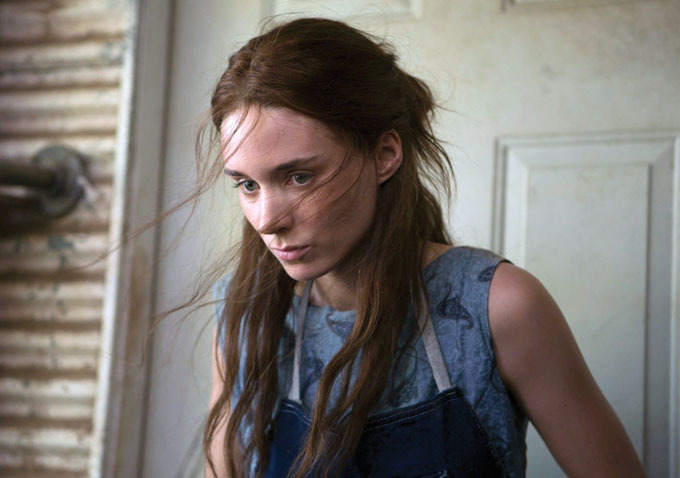By Armond White
Like molasses in January, Ain’t Them Bodies Saints is a slow-moving, dull cliché, an art cliché. Director David Lowery tediously imitates the style of 1970s American Renaissance movies in this agonizing tale of an outlaw couple Bob (Casey Affleck) and Ruth (Rooney Mara) in 1930s Texas. But Lowery neglects the sociological inquiry of that vaunted 70s film movement. Critics who have commended Lowery’s stylistic clichés, and obvious film references, don’t mind the disconnect between his affectations and the spirit of the times he portrays or represents. Praise becomes a middle-brow version of escapism, pretending that this film has the same meanings or impact as Thieves Like Us, Badlands, The Sugarland Express and Days of Heaven. The clichés of Ain’t Them Bodies Saints are more proof how ignorance about movie history contributes to the inanity of modern film culture, the death of cinephilia.
 Since Bob and Ruth don’t resemble contemporary figures, they appear in laconic poses and situations that Lowery presents through deliberate, stultifying vagueness. The commingling of these rural rebels (bank robbers who elude the law, an escaped convict who threatens his moll and child’s undercover deception) with a desperate, lonely young lawman, Wheeler (Ben Foster), has no connection to millennial lifestyles. Not just unbelievable, it’s pointlessly sentimental. Lowery’s bogus characters reflect exaggerated stereotypes–not regionalism. Bob and Ruth’s archly-worded letters suggest Biblical country language without the spiritual modesty as does Wheeler’s taciturn manner—a love triangle by a the cast of second-rate performers.
Since Bob and Ruth don’t resemble contemporary figures, they appear in laconic poses and situations that Lowery presents through deliberate, stultifying vagueness. The commingling of these rural rebels (bank robbers who elude the law, an escaped convict who threatens his moll and child’s undercover deception) with a desperate, lonely young lawman, Wheeler (Ben Foster), has no connection to millennial lifestyles. Not just unbelievable, it’s pointlessly sentimental. Lowery’s bogus characters reflect exaggerated stereotypes–not regionalism. Bob and Ruth’s archly-worded letters suggest Biblical country language without the spiritual modesty as does Wheeler’s taciturn manner—a love triangle by a the cast of second-rate performers.
It never helps to have Casey Affleck do his mouth-breathing thing or Rooney Mara’s self-absorbed gamine. The characters have no family background except for Keith Carradine’s tough old-timer cameo, an infuriating attempt at authenticating Lowery’s pseudo-Altmanisms–a Paul Thomas Anderson gimmick. Nate Parker, as Bob’s Black friend, is the only unexpected presence and his racial tension with Wheeler is interesting but ambiguous. Didn’t David Lowery ever seen the subversive, racially-charged police precinct scene in The Long Goodbye?
No movie from the 70s era of esthetic innovation by Kovacs, Zsigmond, Storaro, Nykvist, Almendros, Willis, who all used technique to express a moral and political view of American experience, was murky as this. Videographer Bradford Young’s silhouettes and monotone palette make Lowery’s posturing virtually illegible. The model is Alan Pakula’s dull moodiness rather than Altman or Malick vivid visions–or the sharp, noir perception of Robert Aldrich’s fine but little-known The Grissom Gang.
Lowery’s use of outlaw western clichés puts Ain’t Them Bodies Saints in the same category of the equally phony, over-dramatized The Place Beyond the Pines and Mud–undoubtedly the worst movie so far this year, although this one comes close. All these films lack the narrative motivation of the 1970s movies; they give art movies a bad name. Not just unoriginal, they’re sociologically and psychologically clueless. Their clichés are not saintly, they’re counterfeit.
Follow Armond White on Twitter at 3xchair
